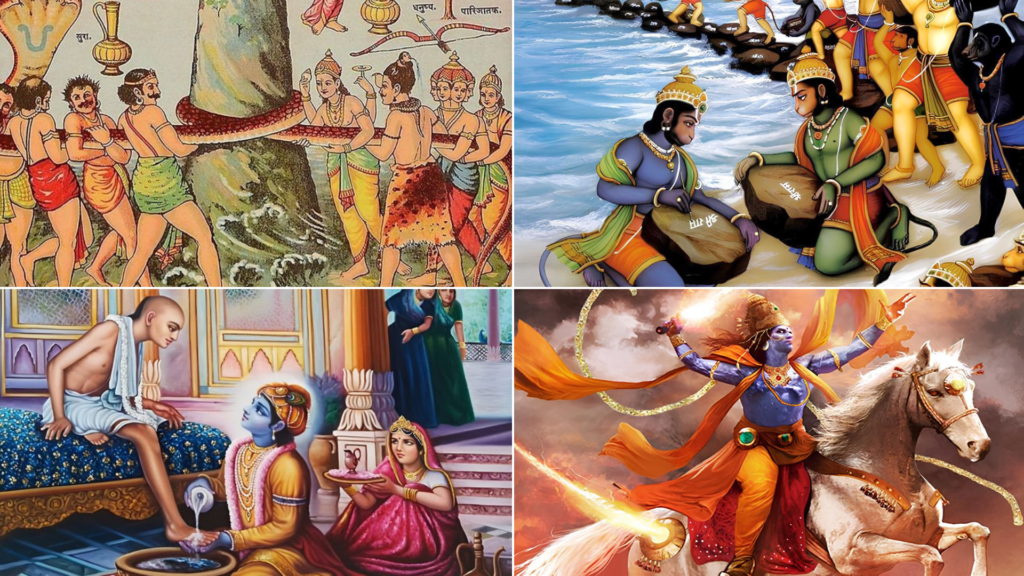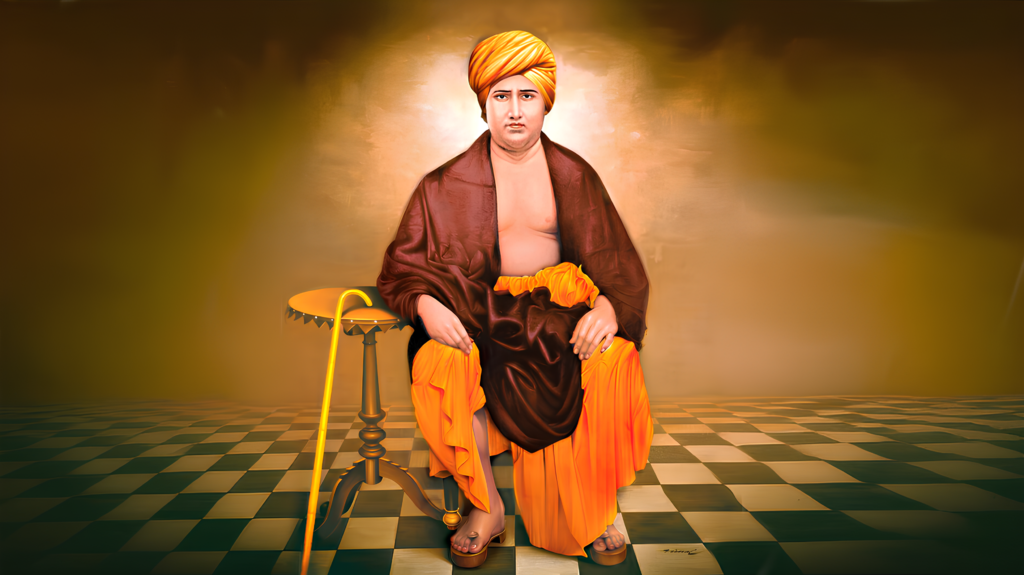The Mysteries of the Four Yugas: Understanding Their Secrets (Part 1)

- The Mysteries of the Four Yugas: Understanding Their Secrets (Part 1)
- Introduction: The Timeless Debate of Yugas
- What Are Yugas and Why Do They Matter?
- The Puzzle of Yuga Durations
- Bal Gangadhar Tilak’s Observations on the Yugas
- The Introduction of “Divine Years”
- Sri Yukteswar’s Revolutionary Insights
- Scientific and Astronomical Connections
- Conclusion: Setting the Stage for Further Exploration
Namaste Shikshanarthi’s
Have you ever wondered how ancient Indian philosophy explains the passage of time? In Hinduism, the concept of the four Yugas—Satya, Treta, Dvapara, and Kali—offers a fascinating perspective on the cyclical nature of existence. But why are there conflicting ideas about their durations? Are they millions of years long or just thousands? Join us in this detailed exploration of the Yugas, where we break down the mysteries one by one. This is Part 1 of a three-part series, setting the foundation for this age-old debate.
Introduction: The Timeless Debate of Yugas
Imagine time as an endless circle rather than a straight line. Ancient Indian philosophers viewed the passage of time in cycles, called Yugas, which measure the rise and fall of dharma (righteousness) over vast spans of time. These Yugas are not just about years, they narrate the story of humanity’s moral and spiritual evolution.
Yet, even after thousands of years, we find ourselves debating a crucial question: how long do these Yugas last? Are they literal measurements of time, spanning millions of years, or symbolic representations of moral decay? This three-part series will delve into the core of this mystery, starting with the origins and contradictions surrounding the Yugas.
What Are Yugas and Why Do They Matter?
According to Hindu scriptures, time is divided into four Yugas:
1. Satya Yuga (The Golden Age): The era of complete virtue and righteousness. Humanity lived in harmony, and dharma was at its peak.
2. Treta Yuga: A gradual decline begins, with dharma supported by three pillars instead of four.
3. Dvapara Yuga: Dharma diminishes further, resting on just two pillars. Society becomes more complex and less virtuous.
4. Kali Yuga: The darkest age, where dharma barely survives on a single pillar. This is the age of moral and spiritual chaos, which we are said to be living in now.
Each Yuga is believed to mark a stage in the spiritual evolution or decline of humanity. But there’s a twist. Ancient texts provide conflicting accounts of their durations.
The Puzzle of Yuga Durations
Here’s where the mystery deepens. Traditional accounts from the Puranas state that a full cycle of four Yugas, called a Mahayuga, spans 4.32 million years, divided as follows:
- Satya Yuga: 1.728 million years
- Treta Yuga: 1.296 million years
- Dvapara Yuga: 864,000 years
- Kali Yuga: 432,000 years
However, this interpretation faces challenges. If the Kali Yuga truly began over 5,000 years ago (around 3102 BCE), as per these calculations, we still have over 426,000 years to go. On the other hand, scholars like Aryabhata proposed that a Mahayuga lasts just 12,000 years, making each Yuga far shorter than traditionally believed.
This discrepancy raises an important question: are the durations symbolic or literal?
Bal Gangadhar Tilak’s Observations on the Yugas
Bal Gangadhar Tilak, a prominent scholar and freedom fighter, explored this dilemma in his work. He noted that the idea of “divine years” was introduced in the Puranas to explain the vast durations. According to this concept:
- One divine year = 360 human years
Using this multiplier, a Yuga’s duration extended dramatically. For instance, the Kali Yuga, traditionally said to last 1,200 divine years, became 432,000 human years.
Tilak suggested that this adjustment might have been made to align ancient Indian cosmology with the growing influence of other civilizations, such as the rapid spread of Christianity during the early centuries AD.
The Introduction of “Divine Years”
Why was 360 chosen as the multiplier for divine years? Ancient Indian astronomy provides a clue. The number 360 corresponds to the number of degrees in a circle, linking it to the movement of celestial bodies. This was more than just a number—it symbolized cosmic harmony and precision.
However, critics argue that this adjustment complicated the understanding of Yugas. Texts like the Atharva Veda and early sections of the Mahabharata do not mention divine years, suggesting that this concept might have been introduced later.
Sri Yukteswar’s Revolutionary Insights
A significant reinterpretation came from Sri Yukteswar Giri, a 19th-century spiritual teacher. In his book The Holy Science, Yukteswar proposed a different model:
- A Mahayuga spans 24,000 years instead of 4.32 million.
- This cycle is divided into two halves: the descending phase (from Satya Yuga to Kali Yuga) and the ascending phase (from Kali Yuga back to Satya Yuga).
- Each Yuga lasts much shorter, with Kali Yuga spanning 2,400 years across both phases.
Yukteswar’s model is grounded in the idea that cosmic cycles influence human evolution. He linked his theory to the precession of the equinoxes, a phenomenon where the Earth’s axis completes a full rotation approximately every 24,000 years.
Scientific and Astronomical Connections
Ancient Indian astronomy played a key role in defining Yugas. Scholars like Aryabhata and Brahmagupta debated the durations of Yugas based on celestial calculations. For instance:
- The Precession Cycle: The Earth’s axial tilt shifts over thousands of years, influencing climate and celestial alignments.
- Mahayuga as a Cosmic Unit: Like modern astronomy uses light-years to measure vast distances, the Mahayuga was likely a unit to measure cosmic time.
Interestingly, similar cycles appear in other traditions. For example, the Greeks spoke of the Great Year, spanning 24,000 years, which mirrors Yukteswar’s interpretation.
Conclusion: Setting the Stage for Further Exploration
The concept of Yugas is not just a measurement of time—it is a profound way to understand the universe and humanity’s journey through it. Whether you accept the longer or shorter durations, the essence of Yugas lies in their ability to connect cosmic movements with human morality.
In this first part of our series, we’ve laid the foundation for understanding the Yugas. In the upcoming parts, we will dive deeper into their philosophical, historical, and spiritual significance.
Stay tuned for Part 2, where we explore how different cultures and texts interpret the Yugas and their relevance in today’s world!


